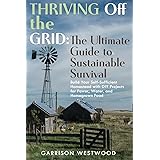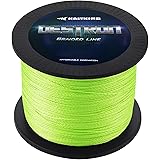Wilderness Survival Hygiene: How to Stay Clean Without Soap in the Outdoors
Maintaining personal hygiene in the wilderness, especially without traditional soap, is critically important for long-term health and survival. The video above provides a glimpse into the challenges and perhaps some rudimentary approaches to wilderness cleanliness; however, understanding comprehensive strategies allows you to effectively mitigate risks when conventional resources are unavailable.
Neglecting hygiene in survival situations can lead to various complications, ranging from uncomfortable skin irritations to serious infections and systemic illnesses. Exposure to pathogens, coupled with compromised immune systems due to stress and inadequate nutrition, drastically increases vulnerability. Consequently, mastering the art of staying clean in austere environments becomes as crucial as securing food and shelter.
The Imperative of Backcountry Cleanliness: More Than Just Comfort
Many people associate cleanliness with mere comfort, yet its role in wilderness survival extends far beyond personal preference. Proper hygiene actively prevents the spread of bacteria, viruses, and parasites, which thrive in unsanitary conditions. Imagine developing a debilitating skin infection or a severe gastrointestinal illness when medical aid is days or weeks away; such scenarios underscore the absolute necessity of rigorous preventative measures.
Furthermore, maintaining some semblance of personal cleanliness significantly boosts morale, which is an often-underestimated psychological factor in survival. A clean body and mind contribute to better decision-making and a more resilient attitude, preventing the downward spiral of despair that can accompany prolonged discomfort and illness. This psychological edge can be the differentiator between enduring a challenging situation and succumbing to its pressures.
Mastering Water Sourcing and Purification: The Foundation of Primitive Hygiene
Access to safe water is the cornerstone of any effective wilderness hygiene regimen. Without clean water, efforts to wash, rinse, or sanitize become futile, potentially introducing more contaminants than they remove. Therefore, understanding reliable methods for sourcing and purifying water stands as the primary skill for anyone seeking to stay clean in the wild.
One effective method involves boiling water vigorously for at least one minute at sea level, extending to three minutes at higher altitudes, which effectively kills most pathogens including bacteria, viruses, and giardia cysts. Conversely, modern filtration systems offer mechanical removal of particulates and many microorganisms, utilizing ceramic filters or hollow fiber membranes to produce potable water. Chemical treatments, like iodine or chlorine dioxide tablets, also effectively neutralize harmful contaminants, although they often require a waiting period before consumption or use. Each technique presents distinct advantages and limitations, demanding careful consideration based on available resources and the specific environmental context.
Natural Alternatives for Cleansing: Improvising Without Soap
When soap is unavailable, the wilderness itself offers several natural alternatives for effective cleansing. Understanding these improvisational tools is fundamental for maintaining basic hygiene. Certain plants possess saponins, natural compounds that produce a lather when agitated with water, mimicking the action of soap.
For instance, the Yucca plant root, found in arid regions, can be pounded and mixed with water to create a mild, cleansing foam suitable for skin and hair. Similarly, horse chestnut seeds, though not for consumption, contain saponins which can be extracted for washing purposes. Conversely, plain fine-grain sand or ash from a campfire can serve as effective abrasive scrubbers, removing dirt and dead skin cells from the body. These physical exfoliants are particularly useful for cleaning hands after handling food or dirty tasks, though they should be used gently to avoid skin irritation. A dilute solution of wood ash mixed with water creates a basic lye, which is surprisingly effective for cutting through grease, but demands extreme caution due to its caustic nature.
Full Body Care in the Wild: Techniques for Minimalist Washing
Maintaining full body cleanliness in the wilderness requires strategic approaches, prioritizing essential areas and maximizing the use of limited resources. A full bath might be impractical; however, targeted washing can significantly improve comfort and health. Focus on critical areas first, such as hands, face, armpits, and groin, as these areas tend to harbor the most bacteria and produce the most odor.
Instead of full submersion, utilize a damp cloth or natural sponge, like loofah gourd remnants, to wipe down your skin thoroughly. Allowing the skin to air dry completely after wiping helps prevent fungal growth and chafing, which can quickly become problematic in humid environments. Furthermore, periodically rinsing hair with clean water, even without soap, helps remove accumulated dirt and oils, preventing scalp irritation and reducing the risk of lice or other infestations. Always remember, even minimal effort towards these tasks yields substantial benefits for overall backcountry cleanliness and well-being.
Oral Hygiene Without a Toothbrush: Keeping Your Mouth Healthy
Dental hygiene is another vital, yet often overlooked, aspect of survival preparedness. Neglecting oral care can lead to painful infections, which are debilitating in a wilderness setting. Fortunately, effective alternatives exist for maintaining a healthy mouth when a toothbrush and toothpaste are absent.
One common method involves chewing on the fibrous ends of twigs from certain trees, such as willow or oak, to fray them into a makeshift brush. These “chew sticks” can then be used to gently scrub teeth and gums, removing food particles and plaque. Conversely, rinsing your mouth vigorously with clean water after every meal helps dislodge debris and freshens your breath. For a natural abrasive, a small amount of fine wood ash can be applied to a finger or chew stick to gently rub teeth, acting as a primitive toothpaste. This approach, while not as effective as modern dental care, significantly reduces the risk of cavities and gum disease, preventing severe discomfort and potential complications during your time in the wilderness.
Sanitation and Waste Management: Preventing Contamination
Proper sanitation and waste management are paramount for preventing the spread of disease and maintaining a healthy camp environment. Careless disposal of human waste, food scraps, and other refuse can attract pests, contaminate water sources, and create unsanitary conditions that foster pathogen growth. Therefore, every action related to waste requires careful consideration.
For human waste, always dig a “cathole” at least 6-8 inches deep and at least 200 feet (about 70 paces) away from water sources, trails, and campsites. Burying waste properly ensures decomposition and minimizes environmental impact. Conversely, pack out all non-biodegradable waste, including toilet paper, hygiene products, and food wrappers, to leave no trace. This meticulous approach prevents the accumulation of waste that could attract animals or contaminate the area, reinforcing the principles of wilderness survival hygiene and responsible outdoor ethics.
Clothing and Gear Maintenance: Extending Lifespan and Functionality
Keeping your clothing and essential gear clean is not merely about aesthetics; it directly impacts their functionality and longevity, which are critical in a survival scenario. Dirt, sweat, and grime can degrade fabric, reduce insulation properties, and even harbor bacteria that cause odors and skin issues. Consequently, regular, albeit basic, maintenance is indispensable.
When possible, air out your clothes daily, especially after strenuous activity, to allow moisture to evaporate and reduce bacterial growth. Brushing off loose dirt and debris with a stiff branch or your hands prevents accumulation that could abrade fabric or attract pests. Conversely, for a deeper clean, a vigorous rinse in a flowing stream (being careful not to contaminate the water downstream) or rubbing clothes with sand and water can remove embedded grime. This pragmatic approach to cleaning clothing and gear directly contributes to your overall comfort, health, and ability to stay clean without soap in the wilderness effectively.











